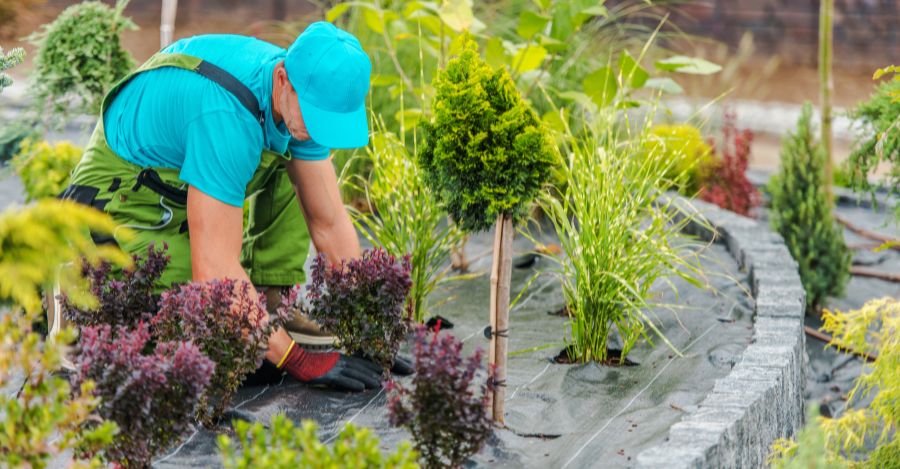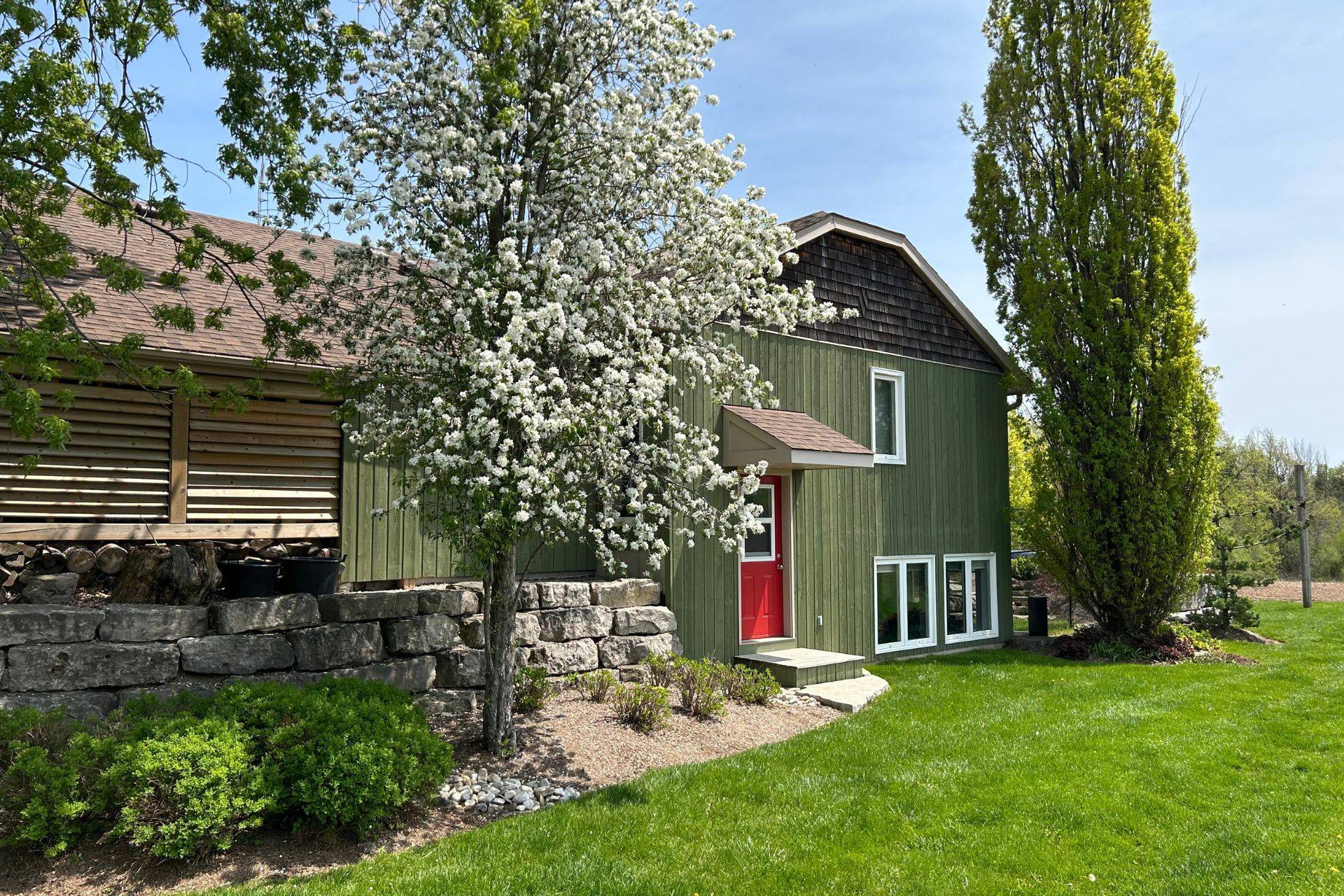Sustainable landscaping isn’t just a trend—it’s a transformative approach to nurturing your outdoor space while protecting the environment. In today’s world, where environmental concerns are at the forefront, adopting eco-friendly practices can turn your yard into a vibrant, sustainable oasis that benefits both you and the planet. Let’s explore how you can integrate green techniques into your yard and discover why experts like Garafraxa Turf Inc. are leading the charge in creating sustainable landscapes.
The Benefits of Sustainable Landscaping
Sustainable landscaping goes beyond mere aesthetics. It’s about cultivating an environment that uses resources wisely, minimizes waste, and supports local ecosystems. By embracing eco-friendly practices, you can:
- Reduce Water Consumption: Smart irrigation systems and drought-tolerant plant selections ensure that every drop counts.
- Enhance Soil Health: Organic composting and natural mulching techniques enrich the soil without relying on chemical fertilizers.
- Support Biodiversity: Native plants provide essential habitats for local wildlife, from pollinators to birds.
- Cut Maintenance Costs: Low-maintenance plants and efficient hardscape designs mean less time and money spent on upkeep.
- Improve Air Quality: A greener yard contributes to better air quality by absorbing carbon dioxide and releasing oxygen.
Water Conservation: The Cornerstone of Eco-Friendly Yards
Water is one of our most precious resources, and sustainable landscaping practices are designed with conservation in mind. Consider installing drip irrigation systems that deliver water directly to the plant roots, minimizing evaporation and runoff. Rainwater harvesting systems can capture and store water for later use, reducing your reliance on municipal water supplies.
Moreover, choosing drought-resistant native plants further ensures that your yard thrives even during dry spells. By reducing water usage, you not only lower your water bill but also contribute to a more resilient local water supply.
Building Healthy Soil Naturally
Soil is the foundation of any garden, and healthy soil means healthy plants. Avoid the heavy use of chemical fertilizers, which can degrade soil quality and harm beneficial microorganisms. Instead, opt for organic compost and mulch to enhance soil structure and fertility. Compost enriches the soil with essential nutrients, while mulch helps retain moisture, suppress weeds, and regulate soil temperature.
Integrating cover crops and practicing crop rotation can further maintain the balance of soil nutrients. Over time, these practices create a robust, self-sustaining ecosystem beneath the surface of your yard.
Embracing Native Plants and Biodiversity
Choosing native plants is one of the most impactful decisions you can make for your sustainable landscape. Native species are adapted to your local climate and soil conditions, meaning they require less water, fertilizer, and maintenance than non-native varieties. This not only conserves resources but also creates a haven for local wildlife, from bees and butterflies to birds and small mammals.
When planning your garden, consider grouping plants with similar water and sunlight needs together. This strategy, known as hydrozoning, optimizes water usage and creates visually appealing sections within your landscape.
Integrating Landscaping for Aesthetic and Eco-Friendly Design
While the environmental benefits of sustainable practices are compelling, the aesthetic appeal of a well-designed yard is equally important. Thoughtful Landscaping transforms your outdoor space into a seamless blend of functionality and beauty. Here are a few tips:
- Plan with Purpose: Map out your yard to incorporate different zones for relaxation, play, and gardening. This not only improves the functionality of your space but also maximizes the efficiency of water and energy use.
- Layer Your Plantings: Create depth and interest by planting in layers—from groundcovers to shrubs to trees. This not only enhances the visual appeal but also supports varied wildlife habitats.
- Seasonal Interest: Choose a mix of plants that bloom at different times of the year to ensure that your yard remains vibrant and colorful throughout all seasons.
The Role of Hardscaping in Sustainable Design
Eco-friendly landscaping isn’t limited to plants alone. Hardscaping—the incorporation of non-living elements such as stone pathways, patios, and retaining walls—plays a crucial role in creating a sustainable outdoor environment. Thoughtfully designed hardscape features can:
- Enhance Water Management: Permeable pavers and gravel pathways allow rainwater to seep into the ground, reducing runoff and replenishing groundwater supplies.
- Reduce Maintenance Needs: Hardscaped areas require less water, fertilizer, and upkeep compared to traditional lawns, freeing up time and resources.
- Define Outdoor Spaces: By strategically placing patios and seating areas, you can create inviting spaces for relaxation and social gatherings that complement the natural beauty of your yard.
Eco-Friendly Lawn Care: A Greener Approach to Turf Management
Maintaining a lush, green lawn doesn’t have to come at the expense of the environment. Sustainable turf management involves selecting grass varieties that are well-suited to your climate and soil conditions. These grasses often require less water and fewer chemicals to thrive. Practices such as mowing at higher heights can promote deeper root growth, making your lawn more drought-resistant.
Additionally, reducing the use of pesticides and synthetic fertilizers helps maintain a healthy balance of microorganisms in the soil. These tiny organisms play a crucial role in nutrient cycling and plant health. By embracing organic lawn care practices, you create a thriving ecosystem right in your backyard.
Energy Efficiency and Outdoor Living
Sustainable landscaping isn’t just about plants and water—it’s about creating a holistic outdoor environment that conserves energy and enhances your quality of life. Incorporate solar-powered lighting along pathways and garden beds to reduce energy consumption while adding a warm ambiance to your yard. Consider installing a rainwater collection system that not only conserves water but also serves as an educational feature for visitors.
Outdoor living spaces, such as decks, patios, and pergolas, can be designed with energy efficiency in mind. Use materials with high thermal mass to moderate temperature fluctuations, and choose sustainable building materials that have a lower environmental impact over their lifecycle.
Creating a Wildlife-Friendly Habitat
A sustainable yard is a haven for wildlife. Incorporate elements such as birdhouses, bee hotels, and small water features to attract and support local fauna. Native plants, with their diverse forms and bloom times, offer food and shelter for pollinators, birds, and beneficial insects. These species, in turn, contribute to the overall health of your garden by controlling pest populations and aiding in pollination.
Consider setting aside a small section of your yard as a wildflower meadow. This not only adds beauty and texture to your landscape but also provides critical habitat for species that are in decline due to habitat loss in urban areas.
Involving the Community and Educating Others
One of the most rewarding aspects of sustainable landscaping is the opportunity to share your knowledge and passion with others. Hosting workshops, community garden days, or even casual tours of your eco-friendly yard can inspire others to adopt similar practices. By fostering a community of environmentally conscious gardeners, you contribute to a broader movement toward sustainable living.
Partnering with Experts for a Greener Future
Transitioning to a sustainable landscape can seem daunting, but you don’t have to do it alone. Professionals in the field can provide guidance, from selecting the right plants to designing efficient irrigation systems and durable hardscape features. Trusted experts like Garafraxa Turf Inc. offer comprehensive services and insights into creating a sustainable, beautiful yard that meets your unique needs.
By collaborating with professionals, you can ensure that every element of your landscape is optimized for both beauty and sustainability. Whether you’re revamping an existing garden or starting from scratch, expert advice can help you navigate challenges and implement solutions that stand the test of time.
Embracing Change for a Greener Tomorrow
The journey toward a sustainable landscape is a continuous process of learning, experimenting, and adapting. As environmental conditions change and new technologies emerge, so too should our approach to yard care evolve. By staying informed about the latest eco-friendly practices and embracing innovative solutions, you contribute to a healthier environment for future generations.
Every small step counts—from reducing water usage and minimizing chemical inputs to creating wildlife-friendly spaces and incorporating energy-efficient features. Together, these practices create a ripple effect that extends far beyond your own backyard, influencing community standards and environmental policies.
Final Thoughts
Sustainable landscaping is more than just a design choice—it’s a commitment to living in harmony with nature. By adopting eco-friendly practices, you can transform your yard into a thriving ecosystem that supports biodiversity, conserves resources, and enhances your quality of life. Whether you’re drawn to the visual appeal of thoughtfully designed Landscaping or the functional benefits of practical Hardscaping, every decision you make contributes to a greener, more sustainable future.
Take the first step today toward creating a space that not only looks beautiful but also respects and nurtures the natural world. With expert guidance from Garafraxa Turf Inc., you can achieve a harmonious balance between aesthetics and sustainability—one that stands as a testament to your commitment to the environment.
Embrace the future of outdoor living with sustainable landscaping practices that enrich your life and safeguard our planet. Your greener yard awaits!









